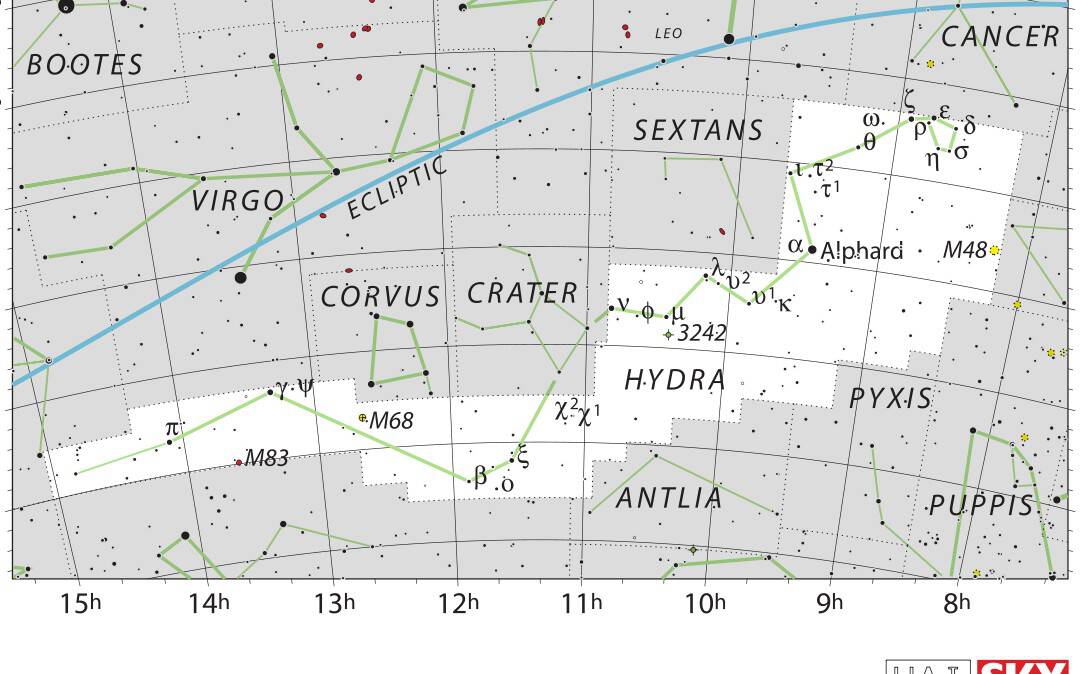When we gaze up at the night sky, we are treated to a mesmerizing display of celestial wonders. Throughout history, various cultures, from Mesopotamia to Greece and Babylon, have weaved intricate tales and myths around the stars, giving rise to a multitude of constellations. One such constellation is Hydra, which has captivated the imagination of astronomers and stargazers alike. Originally identified by the renowned astronomer Ptolemy, Hydra is one of the 48 constellations he catalogued during his time. Over the years, the International Astronomical Community has recognized a total of 88 constellations, including Hydra. Despite advancements in astronomical knowledge, the number of officially recognized constellations remains unchanged since 1922. Let’s delve into the fascinating details of Hydra and discover its unique characteristics.
Hercules
All the constellations are dedicated to honoring heroes, and Hercules is undoubtedly one of the most renowned among them. It is the 5th largest constellation and shares its borders with the Serpent, Eagle, and Dragon constellations.
There are numerous tales surrounding Hercules that contribute to his legendary status. Also referred to as Heracles, he was the valiant son of Zeus and the half-brother of Perseus. He is perhaps most famous for successfully completing the 12 labors, conquering a series of challenges that were imposed upon him. These tasks were given to him as a punishment for murdering his own son, daughter, and wife after being driven insane by Hera.
The constellation of Heracles is depicted as him kneeling in the stars. It is believed that he is kneeling over the dragon, which is located nearby in the constellation. This symbolizes Heracles crushing the creature under his feet.
Cassiopeia
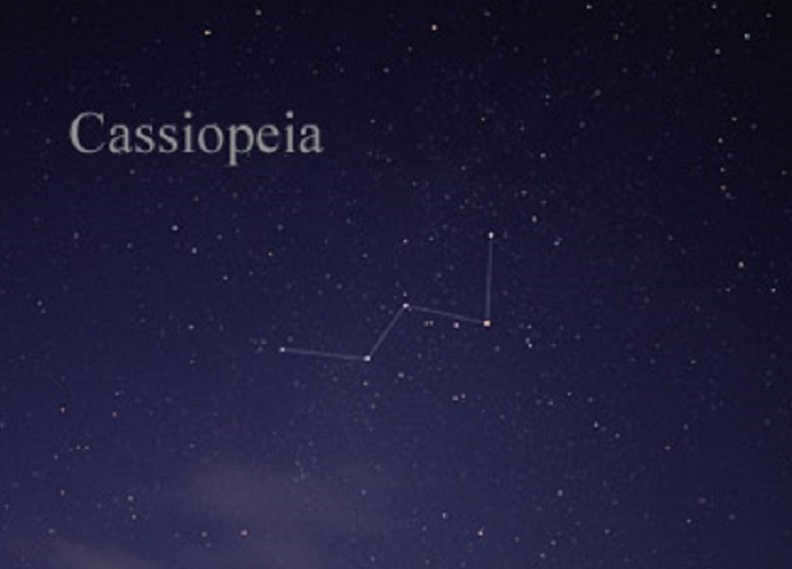
This constellation can be seen all year round in the Northern Hemisphere, as long as you are above 34° latitude. In tropical and southern regions, it can be observed from September to November.
In Greek mythology, Cassiopeia is a well-known character who is famous for her beauty and vanity. She is also the mother of Andromeda, another beautiful woman from Greek mythology who is associated with the stars.
Cassiopeia was sent to the stars as punishment after she angered Poseidon by bragging about her daughter’s beauty and her own, claiming that they were more beautiful than the Nereids, who were sea nymphs and children of the sea god.
The constellation itself has a shape that resembles the letter W when the stars are connected.
The dolphin
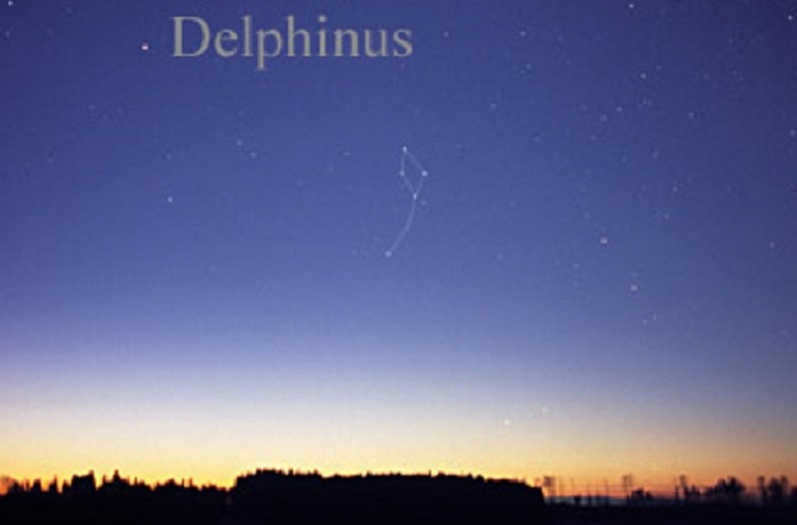
This particular star group, located close to the celestial equator in the Northern Hemisphere, holds the 69th position in terms of size, making it among the smallest constellations. It is surrounded by a multitude of larger constellations, most notably Pegasus (the winged horse) and Sagitta, Sagittarius, and Aquarius.
The name of this star group is also connected to the legends of Poseidon. Poseidon desired to marry Amphitrite, a stunning virgin sea nymph. Fearing the loss of her purity, she fled to the Atlas Mountains and concealed herself there.
Poseidon dispatched numerous men and creatures to search for her. Among these searchers was a man named Dolphin, who was fortunate enough to chance upon the beautiful Nereida. Somehow, he managed to convince the sea nymph to accept Poseidon’s proposal of marriage.
In gratitude, Poseidon placed an image of this hero in the celestial sphere as a tribute to Dolphin.
Winged Horse
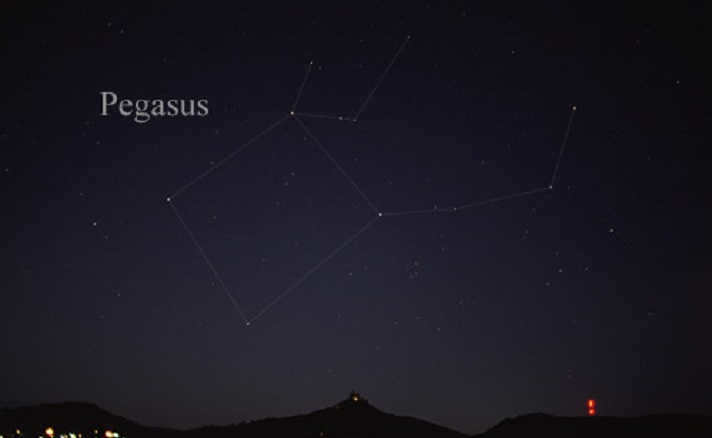
The constellation Pegasus, which can be observed in the image, is of immense size. It ranks as the 7th largest constellation, covering an area of approximately 1200 square degrees. It shares its celestial neighborhood with several renowned constellations, such as Andromeda and Delphinus. Pegasus, represented by a winged horse, holds significant symbolism.
Pegasus was a prominent figure in numerous Greek mythology tales. According to legend, this magical winged horse emerged from the blood of Medusa after she was beheaded by the hero Perseus.
Pegasus also played a crucial role in assisting Bellerophonte in defeating the fearsome creature known as Chimera, with the aid of Athena. Its influence extended beyond Greek mythology, as it held significance in Persian, Chinese, and Hindu astronomy, securing its enduring place among the stars.
The majestic Aquila bird
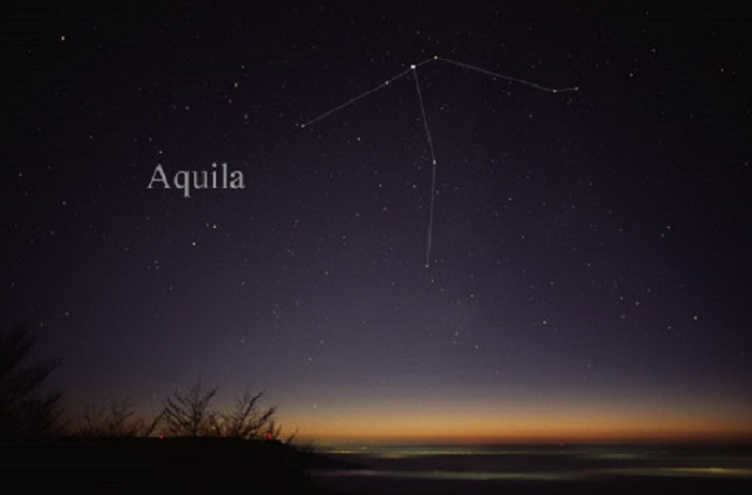
This constellation can be seen most clearly in the summer months in the Northern Hemisphere. It is the 22nd largest constellation and is located in the Milky Way galaxy.
Aquila the Eagle has connections to various myths and legends. In Greek mythology, Aquila was the eagle that carried Zeus’ thunder arrows and was also one of the Stymphalian birds that Hercules defeated with his arrow.
In Hinduism, Aquila is associated with a deity who is part eagle and part human. This deity, similar to Garuda, assisted Rama in his battle against King Ravana, who had abducted Rama’s wife Sita.
In ancient Egyptian culture, this constellation is linked to the Falcon Horus. This connection is due to its proximity to Sagittarius.
Snake
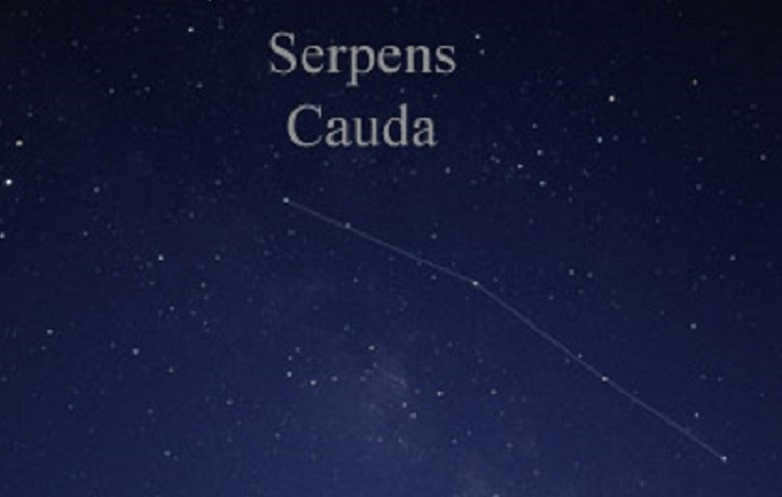
This constellation is known as Hydra, which is a representation of a snake. It stands out among other constellations due to its two distinct and never-ending parts located in the Northern Hemisphere.
One part is situated in the western sky called Serpens Caput (“Serpent’s Head”), while the other part can be found in the eastern sky known as Serpens Cauda (“Serpent’s Tail”). Hydra is positioned above and extends across the constellation of Serpens, which cradles the Snake within its embrace.
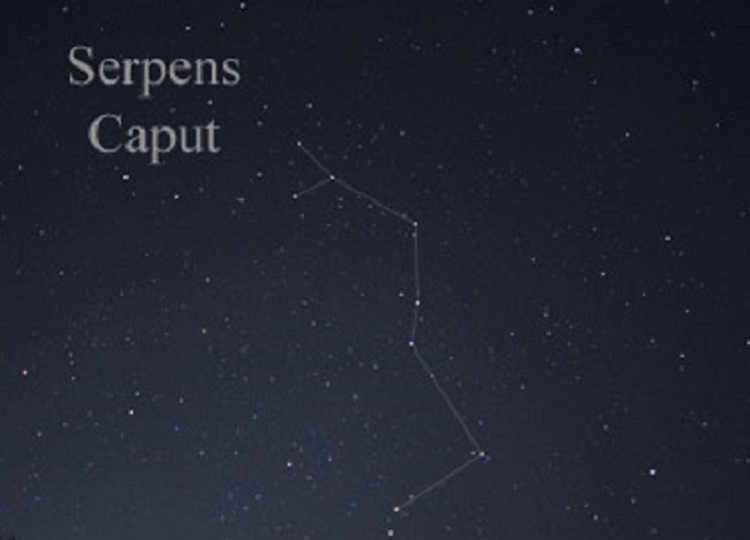
The serpent is a symbol of Asclepius, a character from Greek mythology. Asclepius was the son of Apollo and is known as the patron saint of medicine. He was a skilled healer and used a snake in his healing practices. According to legend, Asclepius once killed a snake, but it came back to life thanks to an herb that was placed on it before its death.
Snakes were often associated with rebirth because of their ability to shed their skin. However, this extraordinary event experienced by Asclepius allowed him to learn the technique of reviving the dead. It is believed that this story inspired the naming of the constellation Serpens – the Serpent.
Hydra
Let’s turn our attention to another remarkable celestial constellation. Hydra is not only the biggest among the 88 constellations that are currently recognized, but it has also held this distinction for more than a century. Situated in the Southern Hemisphere, Hydra shares its borders with the constellations of Libra, Centaurus, and Cancer.
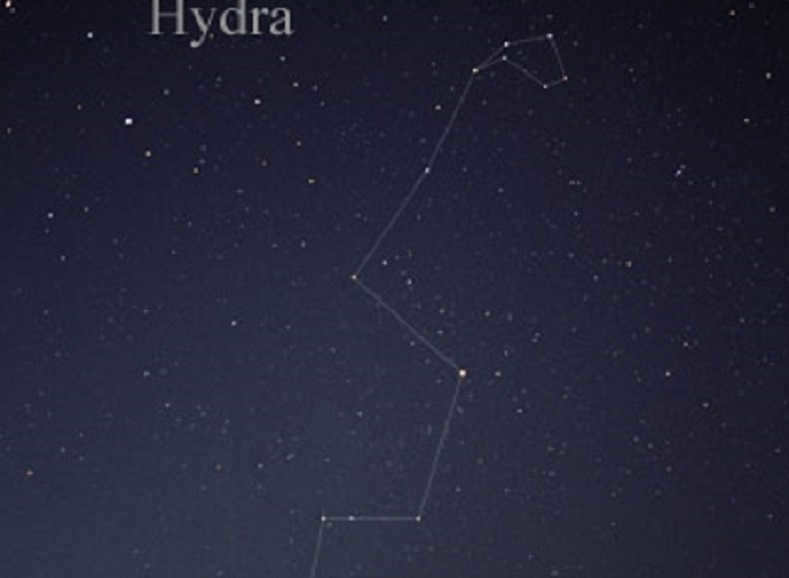
The Hydra is a creature from mythology that holds various meanings and interpretations. It is believed to be a combination of a snake, a bird, and a lion. One story that explains its connection to the stars is the tale of the crow and Apollo.
In this legend, Apollo sent a crow to fetch water for him. However, the crow returned with a bowl of water that had a water snake in it. Apollo, feeling threatened, became furious and hurled the cup, the crow, and the snake into the sky – thus giving birth to the Hydra constellation.
Hydra is also the title of the creature engaged in combat and defeated by the legendary hero Heracles. When one head of the colossal serpent was amputated, two additional heads sprouted, rendering the creature nearly impervious. Iolaus, the nephew of Hercules, cauterized the necks of the creature as each head was severed, hindering their growth and enabling Hercules to vanquish the monstrous being.
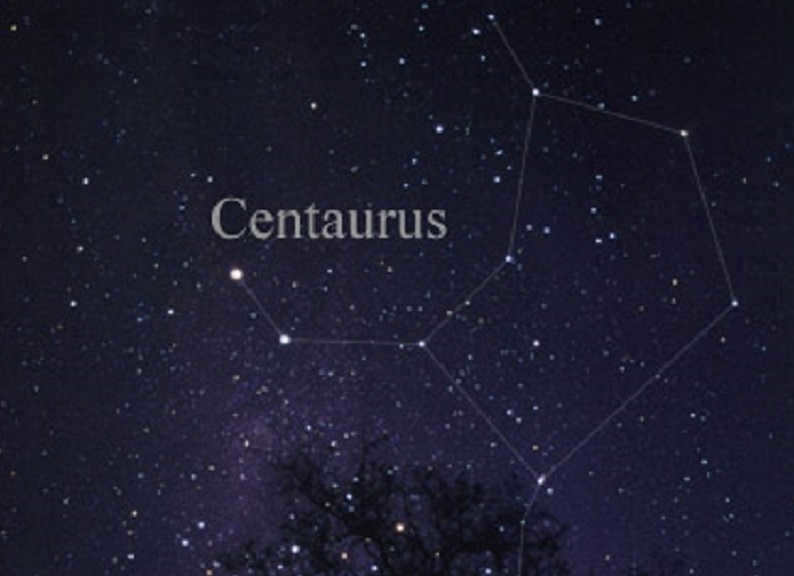
Centaurus is a constellation located in the Southern Hemisphere and is ranked as the ninth largest constellation. It can be easily seen with the naked eye on clear, cloudless nights and is known for its brightness.
Centaurus is represented by a half-man, half-horse figure, which bears a resemblance to the constellation Sagittarius. This mythical creature can be traced back to the Babylonian constellation known as the Bison Man. The Bison Man depicted two creatures, one with the body of a bison and a human head, and the other with a human torso and head, along with the hind legs and tail of a bison.
It is believed that Centaurus represents the centaur Chiron, who was a renowned teacher of heroes such as Jason, Heracles, and Theseus. Chiron’s unfortunate fate was sealed when he was accidentally struck by an arrow fired by Hercules, resulting in his poisoning.
Leo
The constellation Leo is the twelfth largest constellation and is known for its unique shape that resembles a lion in a crouching position. The mane and shoulders of Leo also form a sickle shape, resembling a reverse question mark.
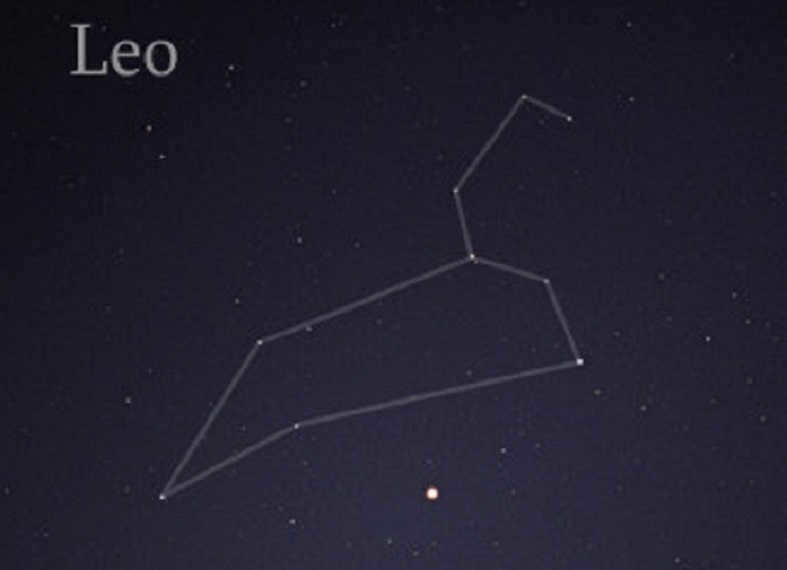
The lion is one of the oldest known constellations, dating back to both Babylonian and Mesopotamian constellations. In Mesopotamian culture, the lion is depicted as the creature Humbaba, who was slain by Gilgamesh, the king of Uruk. It is also associated with the star Regulus, the brightest star in the Leo constellation.
In Greek mythology, the constellation is identified as the Nemean Lion, which would lure warriors by kidnapping women and then devour them. The lion was believed to be invincible, as it was resistant to human weapons.
Heracles accomplished one of his 12 feats by catching and slaying the Nemean lion. As a tribute to this victory, Zeus is said to have placed the Nemean lion in the sky.
The constellation Hydra rightfully holds the title of the largest constellation in the sky, covering an impressive 1303 square degrees. Notably, Hydra is situated in the Southern Hemisphere and shares its celestial neighborhood with well-known constellations such as Virgo, Cancer, Leo, and more.
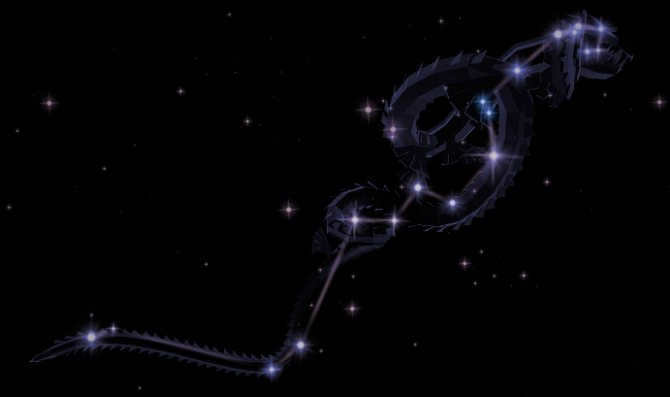
Constellation Hydra
It is worth noting that the constellation Hydra is not only the largest, but also the longest constellation in the sky. People have been familiar with this group of stars since ancient times. In fact, references to it can be found in the writings of Ptolemy.
The Story of Hydra
Interestingly, the name of this constellation is derived from the Latin word for “water serpent.”
Like many constellations, the name Hydra has a mythological origin. According to ancient Greek legend, the god Apollo had a pet raven that went missing while fetching water. As a way of apologizing, the raven brought Apollo a serpent. However, Apollo became angry and threw both the raven and the water bowl into the sky. This is how the constellations Hydra and Corvus (Raven) came to be.
Also check out: Cygnus constellation Constellations OverviewMythologyPrimary stars of the Cygnus constellationCelestial objects in the Cygnus constellationHow to locate the Cygnus constellation in the night sky? Fun FactsThe Cygnus constellation is a prominent feature in the northern hemisphere
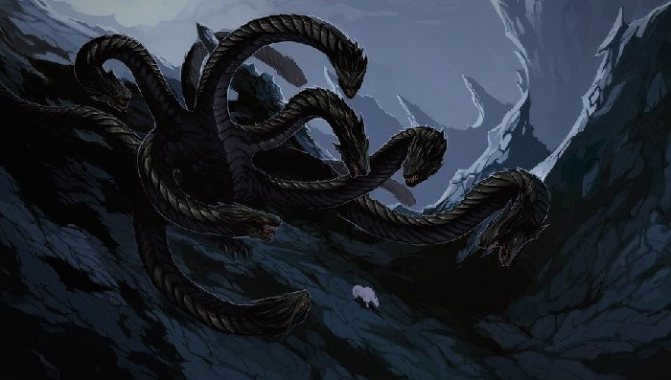
Hydra (image)
Furthermore, the Hydra constellation is frequently linked to the creature that Hercules conquered in his final act of bravery.
The celestial body, which is referenced in contemporary literature and film
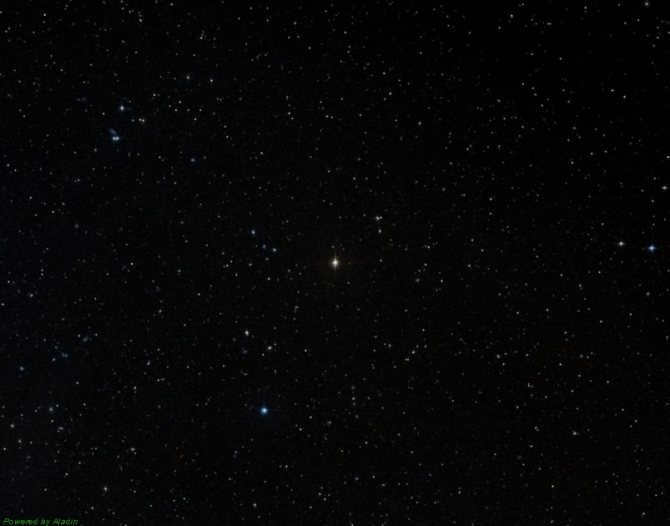
There is a particular celestial body within the Hydra constellation that has attracted attention not only from astronomers but also from other sources. It has been featured in the novels of the renowned author Sukhinov and has even been mentioned in the popular American cartoon series “Transformers”. Nevertheless, this intriguing and well-known celestial object is none other than R Hydra. This star is classified as a variable star and is positioned at a distance of 538 light-years away from Earth.
The M-class red giant in the constellation Kita, known as the Mira-type luminary, exhibits variability in its luminosity with a period of 389 days. Its magnitude ranges from 3.21m to 11m during this time. However, it is not visible to the naked eye when its stellar luminosity diminishes.
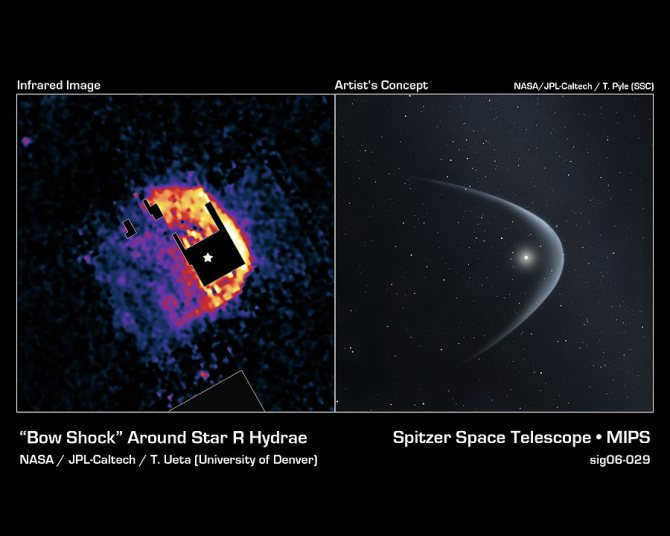
Illustration of the head shock wave of R Hydra can be seen in the left image, while the right image depicts an artist’s rendering of the phenomenon.
In 2006, the groundbreaking observation of R Hydra’s head shock wave was made by the Spitzer infrared orbiting telescope. This remarkable event occurs at the precise location where the interstellar matter collides with the star’s stellar wind, resulting in a braking effect. The R Hydra head shock wave is situated approximately 16.3 astronomical units away from the star, with a thickness of 6.2 astronomical units. It is worth noting that the long-period star R Hydra travels at a speed of around 50 km/s, and the mass of its shock wave is 400 times greater than that of our planet.
The primary celestial bodies of the star grouping
Even though the star grouping Hydra is the most expansive, it lacks a significant number of luminous stars within its configuration. Nevertheless, this does not impede its observance.
The star Alpha is known as Alphard. It is an orange giant that surpasses the Sun in size by 50 times and has a mass equivalent to three times that of our solar system. Experts estimate its age to be around 420 million years.
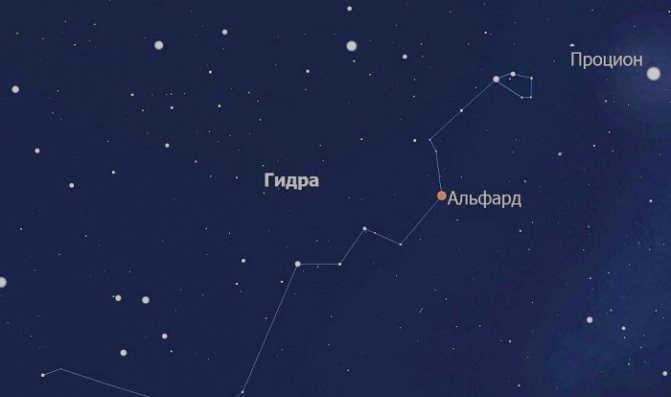
Alfard
Gamma is a yellow giant, similar to Alpha and has a mass of three solar masses. However, it is 13 times larger than our main star. Its age has been estimated to be 372 million years.
Zeta is a giant with a mass of 4.2 solar masses. It is a very bright object that has been in existence for 400 million years.
Beta is a binary star, meaning it consists of two stars. The primary star is a giant, and it is accompanied by a B-class variable star.
27 Hydra is a giant star with a yellow color.
Sigma is known as Minchir, and the constellations Nu are both orange-colored giants. On the other hand, Pi, although it has a similar color, is in the transition phase between being a subgiant and a giant.
R Hydra is known as a red giant star. It is part of a group of pulsating stars called Mira variables, which are in the final stage of their development.
Both V Hydra and U Hydra are examples of bright variable stars. They are also classified as luminous stars. Additionally, V Hydra is one of the reddest stars in the constellation, with a B-V index of +5.5. As a result, it can be seen with the naked eye.
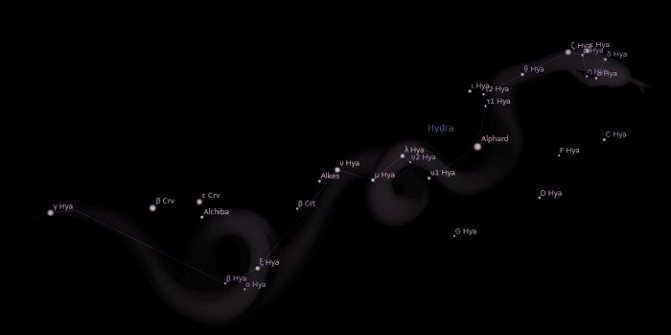
Hydra stars
The Hydra constellation is made up of a collection of stars. Currently, it is understood that there are four individual stars within the constellation. These stars are connected to the main binary system through the force of gravity. Interestingly, the orbital period of the stars can vary significantly, ranging from 15 to 10,000 years.
Delta, one of the stars in the Hydra constellation, is a binary system that shines brighter than the Sun. Additionally, it is classified as a white dwarf.
Following this magnificent image (unfortunately, only fully visible through powerful telescopes), let us direct our attention to the alpha star of the constellation in question. In school telescopes, one can easily locate the globular star cluster M 53 near this unassuming fifth magnitude star. It possesses a total luminosity of 8.7m and an apparent diameter of 16′. This cluster is currently moving away from Earth at a velocity of 100 km/s, and we are currently separated by a distance of 20 kpc.
Beneath Spica, two stars of nearly equal brightness (around 3m) can sometimes be observed at an approximate angular separation of 10°
while at other times only one star, the brighter one, is visible. This brighter star is located in the Hydra constellation, and the one that is not always visible to the naked eye is the long-period variable R within the same constellation.
This enormous freezing star with brilliant emission lines in its spectrum bears a striking resemblance to Mira Kita in terms of its physical characteristics. The magnitude of light variation in R Hydra is exceptionally significant, ranging from 3.5m to 10.9m. It takes just over a terrestrial year – 387 days – to transition from one light maximum to the next neighboring maximum. We reiterate that R Hydra is a typical long-period variable, and all that has been mentioned about the factors influencing fluctuations in the light of Mira Kita can be applied to R Hydra as well.
Adjacent to the star, there exists a planetary nebula known as Hydra. However, due to its low luminosity (9.7m) and minuscule apparent diameter (only 0.7′), it is practical to observe it solely using sufficiently large telescopes. In school telescopes, at best, a faintly discernible nebulous bright spot can be seen here.
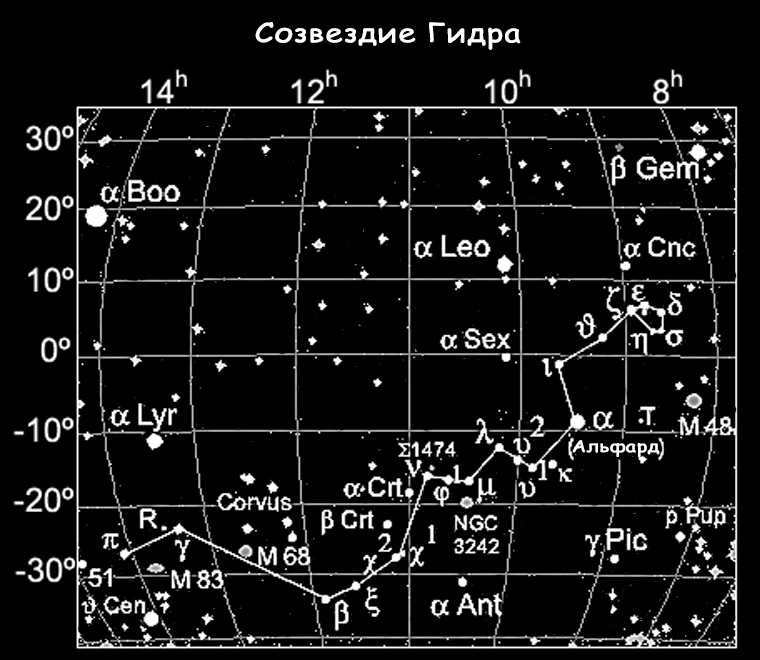
Hydra constellation holds the distinction of being the longest constellation in the night sky. Spanning over 1300 square degrees, it is situated between the zodiac signs of Cancer and Libra.
The lengthiest aquatic creature in the heavens.
The star pattern Hydra can be found in the Southern Hemisphere. Thus, it is most suitable for observation in our latitudes during the end of winter and the beginning of spring. For instance, the southern parts of Russia are able to witness the entire constellation, whereas other regions can only catch a glimpse of it.
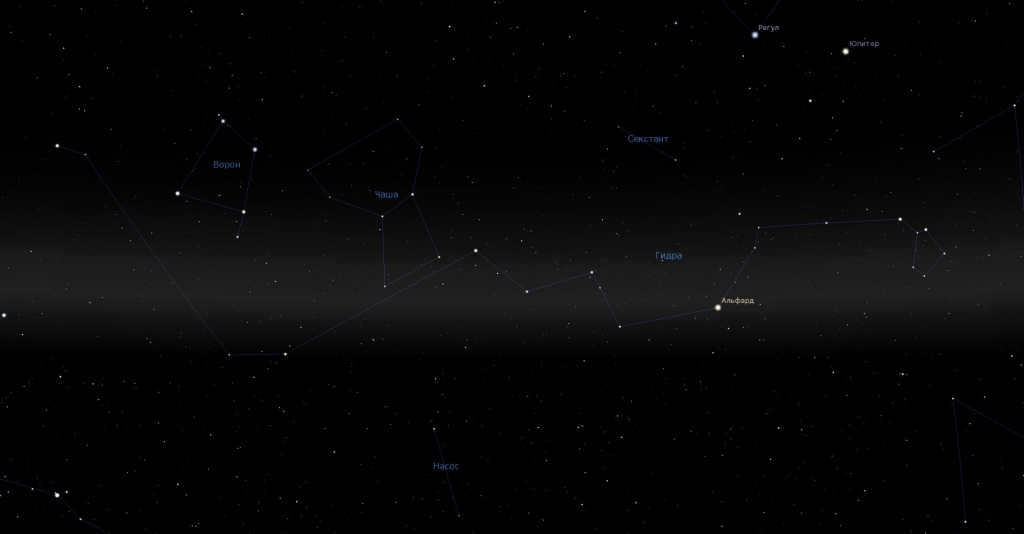
Hydra is a constellation that can be easily seen in the night sky. It is located near other well-known constellations like Libra, Cancer, and Virgo. Due to its long length, there are many other constellations that can be seen near Hydra, such as Pump, Compass, Wolf, Little Dog, Raven, Centaurus, Corma, and Sextant. Interestingly, there are a total of 229 stars that can be observed in the sky without the need for binoculars or telescopes.

It is important to mention that despite its size, this constellation is not characterized by a large number of bright stars. For instance, there are only 14 brightest stars in the constellation, and only one of them has a second stellar magnitude. The brightest star in this constellation is Alpha Hydra, also known as Alphard. The name of this star translates to “lonely,” which is fitting because there are no other equally bright objects near it.
This star, often referred to as the heart of Hydra, is an orange giant. Alphard has an apparent stellar magnitude of 1.98m and belongs to the spectral class K3 II-III. Its surface temperature is approximately 4100 K. The size of Alphard is about 40 times that of the Sun, and its mass is equivalent to three solar masses.
What’s fascinating is that Alpha Hydra is actually a trinary system. Furthermore, there is an additional binary star that is in orbit at a separation of 210 arc seconds from the primary star. The two stars in this binary system are both classified as K2 stars and have a stellar magnitude of approximately 9.5m. The angular separation between these two stars is an impressive 238 arc seconds. In the field of astronomy, Alfard has been extensively studied through astroseismology.
A celestial body that is referenced in contemporary works of literature and film
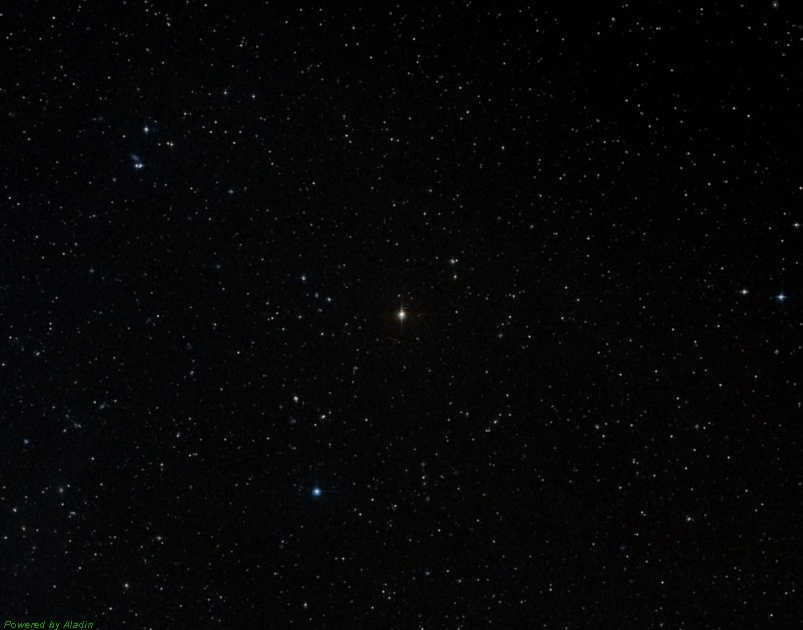
There exists a particular celestial body located in the constellation of Hydra that has captured the attention of not only astronomers but also other enthusiasts. This star has even made its way into the novels of the esteemed writer Sukhinov and has been mentioned in a popular American cartoon series called “Transformers”. Regardless of these various associations, the star in question is none other than R Hydra. As its name suggests, R Hydra is classified as a variable star and is situated at a distance of 538 light years from our home planet Earth.
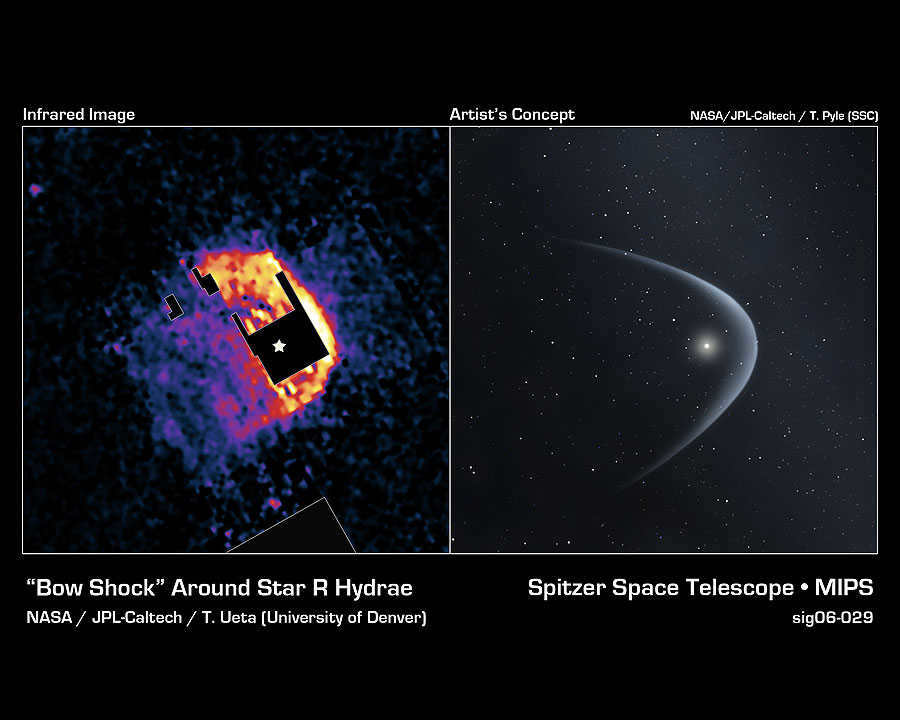
Head shock wave of R Hydra. On the left, there is an infrared image, while on the right, there is an artist’s illustration.
In 2006, the R Hydra head shock wave was captured for the first time by the Spitzer infrared orbiting telescope. This specific area is where the slowdown of interstellar matter that collides with a star’s stellar wind takes place. The R Hydra head shock wave is positioned at a distance of 16.3 astronomical units from the star. The width of the wave measures 6.2 astronomical units. It is noteworthy to mention that the long-period star R Hydra moves at a velocity of approximately 50 km/s, and the mass of its shock wave is 400 times greater than that of our planet.
The Range of Hydra
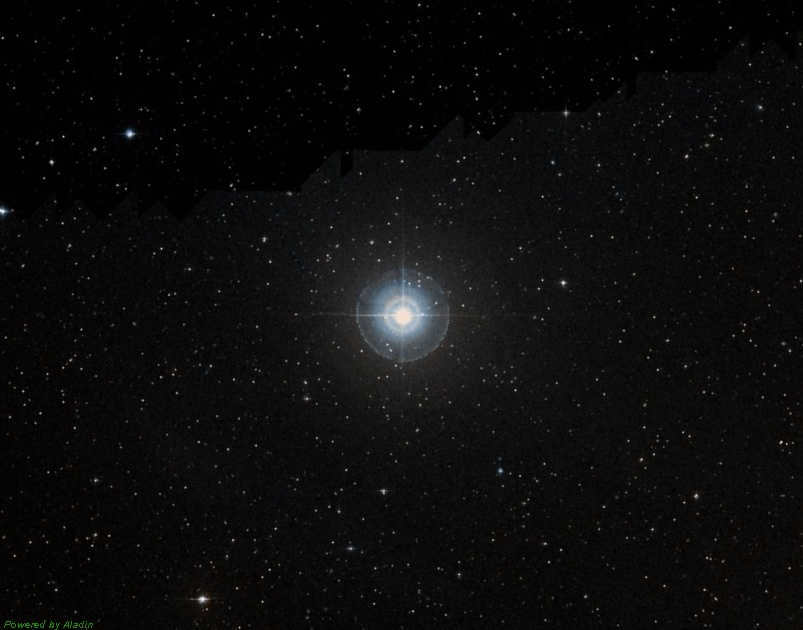
The second position in the ranking of Hydra’s stars would be occupied by Gamma Hydra. This celestial body can also be observed by the naked eye from Earth. With an apparent stellar magnitude of 3.24m, Gamma Hydra is known as the “snake’s tail” in Arabic. This star belongs to the G8 spectral class and is classified as a yellow giant.
Located approximately 214 light-years away from the Sun, Gamma Hydra has a surface temperature of approximately 3820 K. Its mass is equivalent to 1.5-2 times that of the Sun. With a radius of 60 solar radii and a luminosity 655 times greater than the Sun’s, Gamma Hydra shines brightly in the night sky.
Xi Hydra
Xi Hydra is a unique and extraordinary phenomenon. This incredible celestial body has captivated the imagination of astronomers and stargazers alike. With its mesmerizing beauty and mysterious nature, Xi Hydra stands apart from other known objects in the universe. The distinct characteristics of Xi Hydra make it a subject of great interest and study. Scientists are constantly seeking to unravel the secrets of this enigmatic entity. Its enigmatic features and alluring charm continue to fascinate and intrigue scientists and space enthusiasts around the world. The allure of Xi Hydra lies in its ability to defy conventional understanding and spark curiosity in the minds of those who gaze upon it. It is a true marvel of the cosmos, a testament to the wonders that lie beyond our planet.
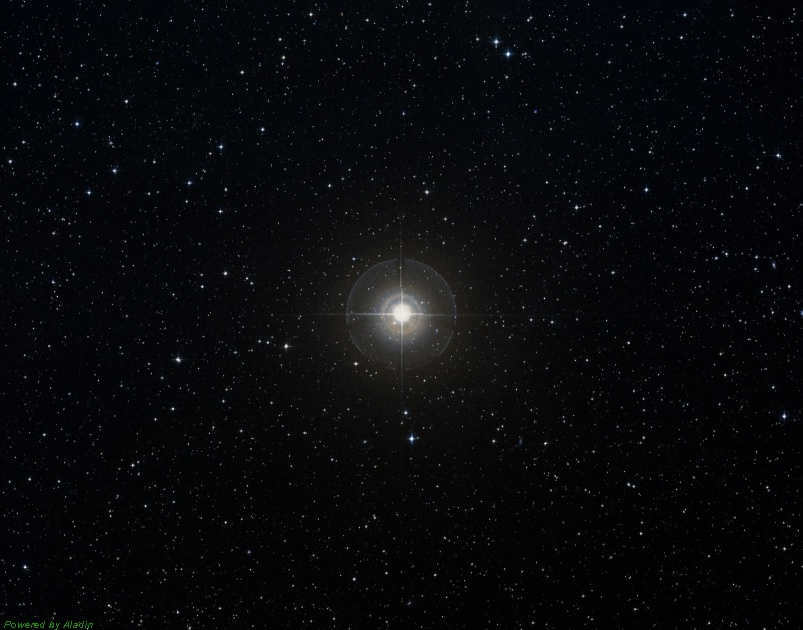
Xi Hydra, a fascinating yellow giant in the Hydra constellation, stands out with its stellar magnitude of 3.65m. Situated at a relatively short distance from Earth, Xi Hydra is approximately 130 light years away. In terms of size, it surpasses our Sun by a factor of 10. Additionally, with a mass equivalent to three solar masses, it shines 60 times brighter than our own star. However, despite its brightness, Xi Hydra falls short in terms of temperature compared to our Sun, as it belongs to the spectral class G7IIIC and has a temperature of 5010 K.
Groupings within the aquatic constellation
Containing numerous celestial entities including diverse nebulae, clusters, and galaxies, the expansive water constellation is the largest and most prominent in the night sky. Notably, it is home to three entities cataloged by Messier. One such entity is cluster number 48.
Scattered group M48
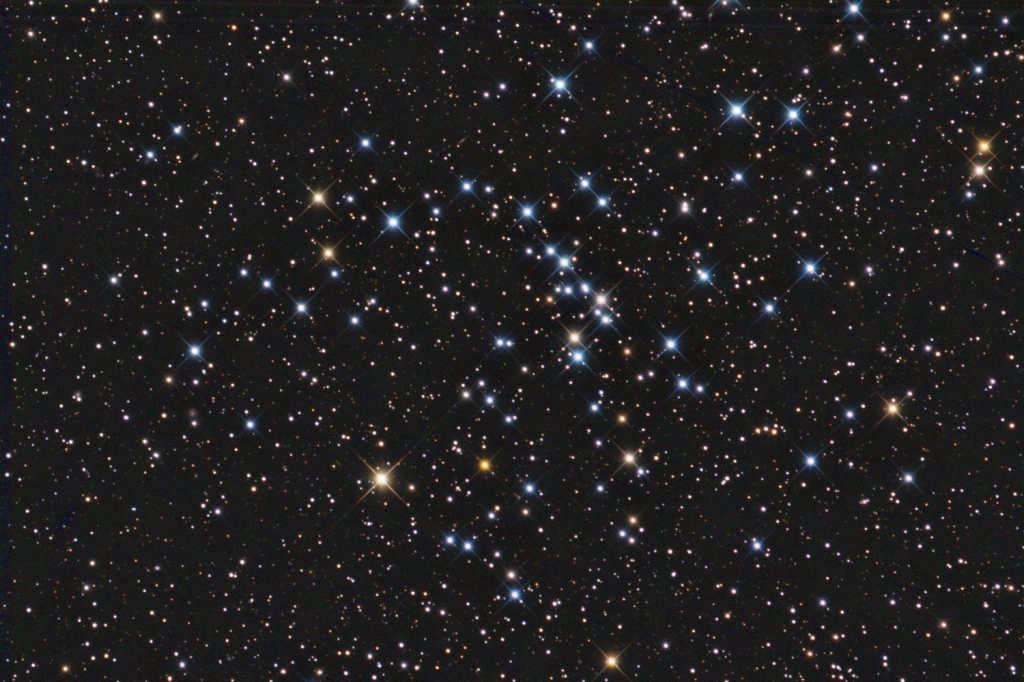
Photo of the scattered M48 cluster
The M48 cluster is located on the western edge of the constellation being studied. It is most visible during the winter season. When using binoculars, you can observe at least twelve stars, and with a small telescope, you can see around fifty stars. If you have a larger aperture telescope, you will be able to observe approximately eighty stars. The brightest stars in the Messier 48 cluster create a shape that resembles a boomerang.
M68
can be paraphrased as “M68” or “the M68” or even “the M68 rifle”.
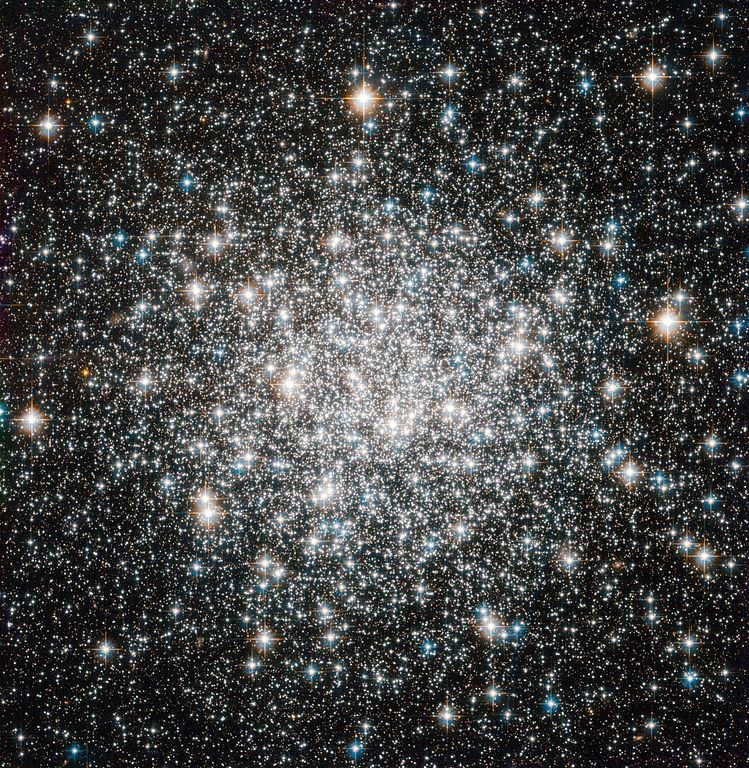
Image of the globular cluster M68.
Discovered in 1870, the M68 cluster is the second object in the Messier catalogue. Located in the constellation Hydra, it is approximately 30 thousand light years away. What makes this cluster unique is its position on the opposite side of our galaxy. The best time to observe M68 is during the spring season. When using binoculars, it appears as a round and diffuse spot surrounded by numerous foreground stars. With a larger telescope, one can even see the center of this relatively sparse cluster.
M83
can be paraphrased as “Midnight 83” or “M-eighty-three”.

Photograph M83, also known as the Southern Spiral, showcases a spiral galaxy with a junction located in the Hydra constellation.
Situated 15 million light years away, the M83 is not just a cluster but an entire galaxy. It boasts a spiral structure with a junction, earning it the alternative name Southern Spiral. This galaxy is notable for its abundance of supernovae, with a total of six recorded so far.
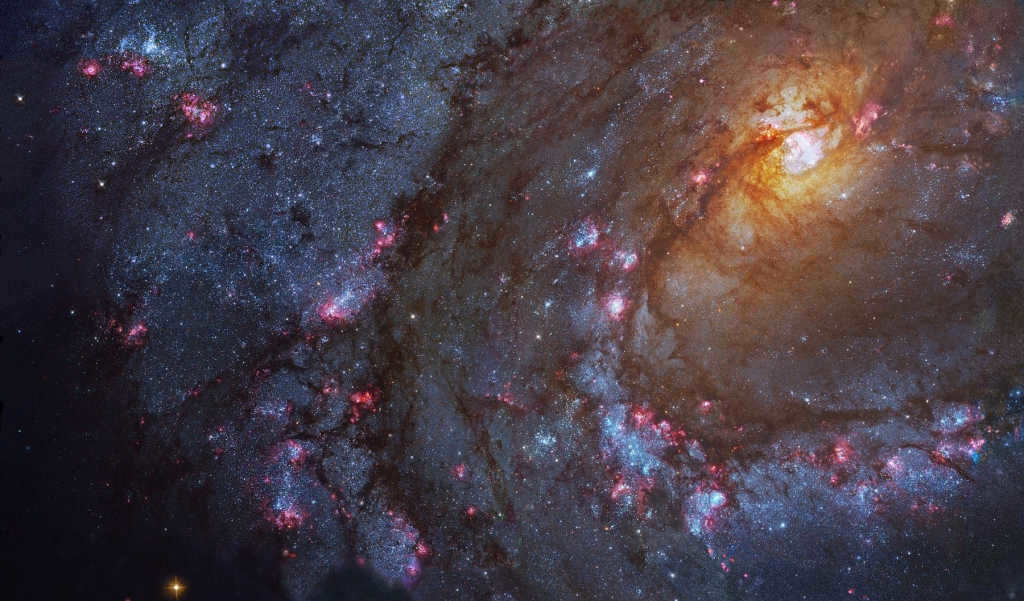

The M83 galaxy, which was first observed in 1752 and later included in Messier’s catalog in 1781, is currently a subject of active exploration. Recently, a black hole named MQ1 was discovered within M83, and it is exerting a strong gravitational force on the surrounding matter despite its seemingly “light” nature.
The phantom of Jupiter
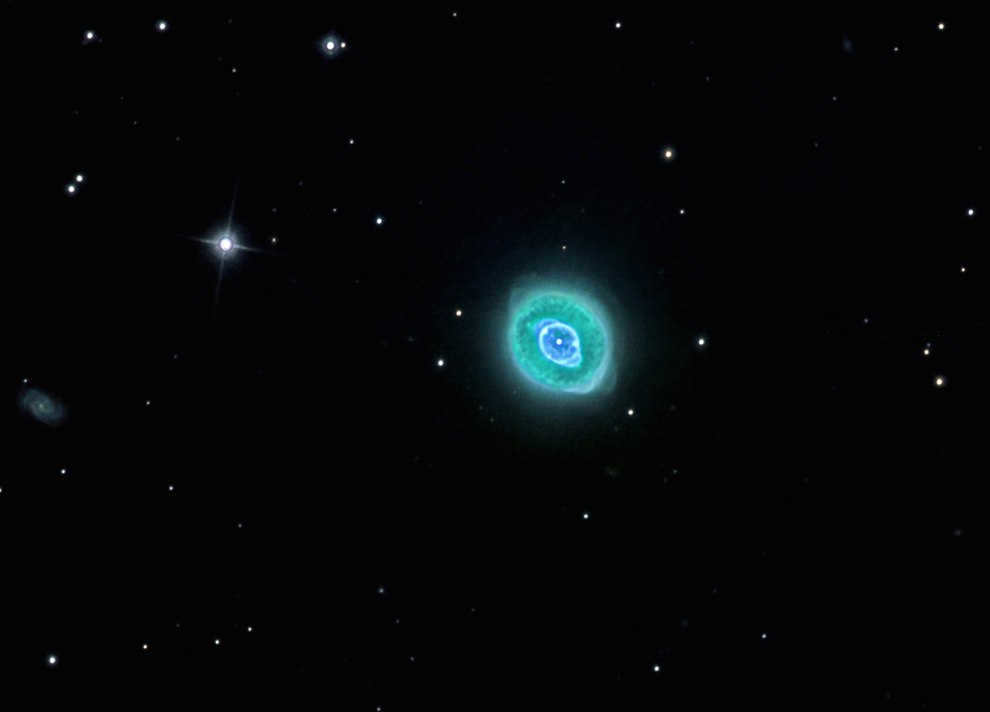
There exists a photo of the planetary nebula NGC 3242, which is also commonly referred to as Jupiter’s Ghost.
The planetary nebula NGC 3242 is situated in the constellation Hydra and is known by the name Jupiter’s Ghost. In astronomical catalogs, it is listed as NGC 3242. The luminosity of this nebula is approximately 8.6m. NGC 3242 is located at a distance of 2600 light years and can be observed through a telescope as a small disk with a blue-green hue. Over the years, various scientists have assigned different numbers and names to this object; however, it was first discovered by W. Herschel in 1785.
The Constellation’s Historical Background
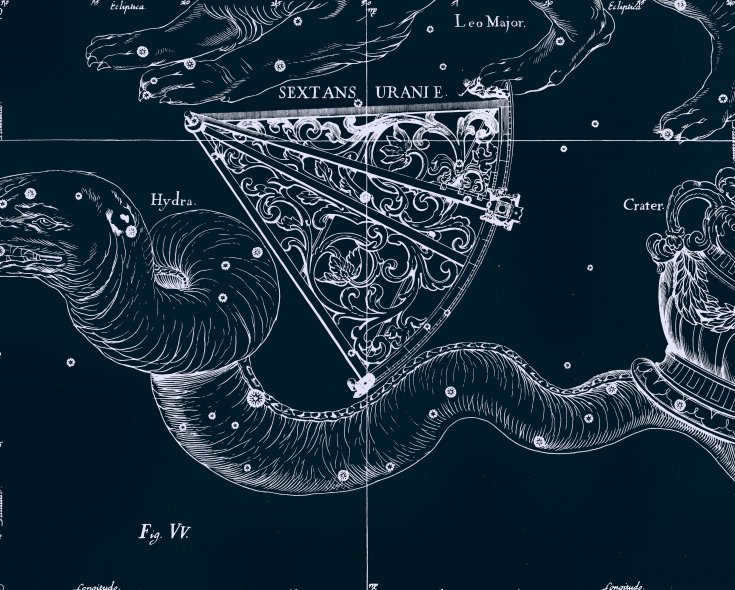

This is a drawing of the Water Hydra constellation by Jan Hevelius from his collection of constellations.
Not all stars are visible to the naked eye. Certain celestial formations are made up of faint luminaries that can only be appreciated with binoculars and under optimal viewing conditions. One notable example is the Hydra constellation, which is well-known to those in the southern region of our country. It is renowned for its vast size and the difficulty in discerning its constituent luminaries.
Place
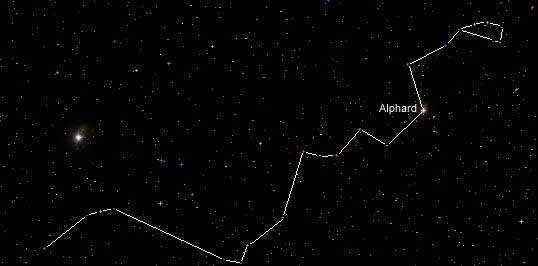
The constellation Hydra covers a vast area in the sky, but it is classified as an equatorial constellation, meaning that it can only be fully observed in the southern regions of Russia. To locate Hydra, one must look for its more prominent neighboring constellations. It is situated to the south of the celestial figures of Virgo and Leo. The brightest star in Hydra, known as Alfard, is located near Regulus (Alpha Leo). The most notable star in the zodiac sign of Leo in August lies to the north of the aforementioned celestial pattern’s alpha star.
Mythical creature of legend
Despite its lack of brightness, this constellation is one of the oldest. It is mentioned in the Ptolemy catalog, which was compiled in the 2nd century AD. In this catalog, the constellation Hydra is referred to as the “Water Serpent”. This name is likely connected to one of the legends surrounding the creation of the constellation. According to the legend, the Greek god Apollo sent a raven to fetch water. The raven succeeded in its task, but also inadvertently scooped up the serpent’s bowl along with the water. Angered by this, Apollo threw all the participants into the sky, resulting in the formation of the constellations Water Serpent, Raven, and Bowl.
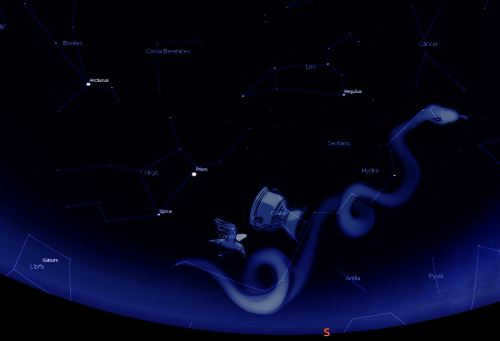

However, it is more commonly linked to the Lernaean Hydra, a celestial formation that was vanquished by Heracles in his second labor. This colossal creature possessed multiple heads and emitted toxic fumes, rendering it nearly invincible. Few individuals possessed the strength and skill to confront this formidable foe. Whenever one of its heads was severed, two new ones would instantly sprout in its place. Through cunning tactics and the aid of his companion Iolaus, the hero ultimately triumphed over the monstrous Hydra. As a testament to this legendary accomplishment, the gods immortalized Hydra in the heavens.
The core of the snake
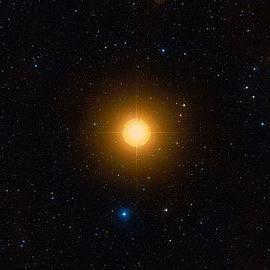

The Hydra constellation is notable for its solitary and bright luminary, Alphard. Alphard, which means “lonely” in Greek, is also known by other names such as Heart of the Hydra, Heart of the Great Serpent, and Solitary Serpent. With a brightness of 1.98 star magnitude, it stands out in the celestial pattern.
Alphard is a triple star system, with its main component being 40 times larger than the Sun. It is also a variable luminary. Orbiting around it is a small double star. Alphard is located approximately 177 light-years away from the Sun.
In ancient Chinese records, Alpha Hydra was known as the Red Bird. The reason for this can be easily identified – simply locate a star in the sky. It possesses a reddish tint.
Shockwave
However, not only does Alfard adorn the Hydra constellation. The composition of this cosmic configuration encompasses a number of intriguing entities. Among them is R Hydra, a fluctuating star of the Mira Kita variety. It is situated approximately 538 light-years away from Earth. This celestial body belongs to the class M red giants.
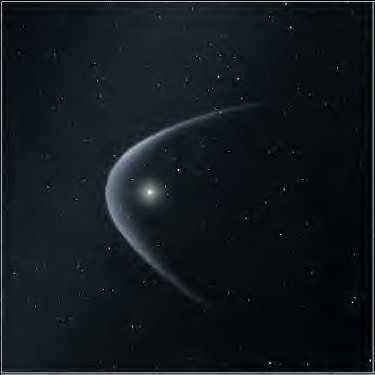
The apparent brightness of R Hydra fluctuates between 3.21 and 11.00 magnitudes. The duration of this drastic change is approximately 390 days. R Hydra gained recognition primarily due to the infrared image captured by the Spitzer space telescope in 2006. This image clearly displays the shockwave generated by the deceleration of interstellar matter as it approaches the star. The observed boundary is located at a distance of 16.29 astronomical units from the object. Scientists estimate the thickness of the shockwave to be 6.188 astronomical units. The star is moving at a velocity of 50 km/s. The shockwave preceding it possesses a mass 400 times greater than that of our planet. This photograph of such a phenomenon in a red giant star was acquired for the first time.
Nebulae and galaxies
The constellation Hydra has more to offer than meets the eye. It is home to a variety of fascinating objects, including nebulae and galaxies. In 1785, the renowned astronomer William Herschel made a groundbreaking discovery within this constellation – a cosmic formation that would later become known as the Ghost of Jupiter, or the NGC 3242 nebula. Even amateur astronomers can observe this magnificent nebula through their telescopes, where it reveals itself in a stunning bluish-green hue.
In addition to the NGC 3242 nebula, the constellation Hydra is also home to other notable galaxies, such as NGC 3923 and NGC 3621. The latter galaxy is bright enough to be visible even through an amateur telescope.

